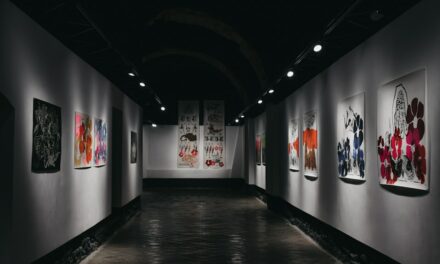Left-handed calligraphy presents a distinct set of challenges that can often deter aspiring artists from pursuing this elegant craft. One of the primary hurdles is the natural inclination of left-handed individuals to push their writing instruments across the page, as opposed to pulling them, which is the more common motion for right-handed writers. This fundamental difference can lead to awkward hand positions and uncomfortable angles, making it difficult to achieve the fluidity and grace that characterise beautiful calligraphy.
Additionally, left-handed calligraphers may find themselves struggling with the alignment of letters and spacing, as their hands can obscure the lines they are trying to follow, resulting in uneven lettering and a lack of precision. Moreover, left-handed calligraphers often face the issue of ink smudging. As they write, their hands tend to drag across freshly inked letters, leading to unintended blots and streaks that can mar an otherwise pristine piece of work.
This not only affects the aesthetic quality of their calligraphy but can also be disheartening for those who take pride in their craft. Understanding these unique challenges is the first step towards overcoming them, allowing left-handed artists to develop techniques and strategies that cater specifically to their needs. By acknowledging these obstacles, left-handed calligraphers can cultivate a sense of resilience and creativity, transforming potential frustrations into opportunities for growth.
Summary
- Left-handed calligraphy presents unique challenges due to the natural hand position and movement of left-handed writers.
- Choosing the right tools and materials, such as quick-drying ink and smooth paper, is crucial for left-handed calligraphy.
- Adjusting hand position and angle is essential for left-handed calligraphers to achieve optimal control and precision.
- Overcoming smudging and ink flow issues requires left-handed calligraphers to experiment with different techniques and tools.
- Developing consistency and control in left-handed calligraphy takes practice and patience, but can be achieved with dedication.
Choosing the Right Tools and Materials for Left-Handed Calligraphy
Selecting the appropriate tools and materials is crucial for any calligrapher, but it takes on added significance for left-handed individuals. The choice of pen or nib can greatly influence the ease with which one writes. For left-handed calligraphers, it is often advisable to opt for pens that have a smooth ink flow and a nib designed for left-handed use.
These pens typically feature a more rounded tip, allowing for a more comfortable writing experience without the risk of scratching the paper. Additionally, fountain pens with adjustable ink flow can provide greater control over the amount of ink dispensed, reducing the likelihood of smudging. Paper selection is equally important in the pursuit of flawless calligraphy.
Left-handed writers should seek out papers that are smooth and have a quick-drying surface to minimise smudging. Papers with a slight texture can be problematic, as they may cause the nib to catch or drag, leading to inconsistent lines. Furthermore, experimenting with different types of ink can yield varying results; some inks dry faster than others, which can be beneficial for left-handed calligraphers who need to avoid smudging.
By carefully selecting tools and materials that cater to their unique needs, left-handed calligraphers can enhance their writing experience and produce work that reflects their artistic vision.
Adjusting Hand Position and Angle for Left-Handed Calligraphy
The positioning of the hand and the angle at which one writes are critical factors in achieving beautiful calligraphy. For left-handed calligraphers, finding a comfortable hand position can be particularly challenging due to the natural tendency to push rather than pull the pen. To counteract this, many left-handed artists benefit from experimenting with different angles and grips.
A common technique is to rotate the paper slightly counterclockwise, allowing for a more natural wrist movement while writing. This adjustment not only helps in achieving better letter formation but also reduces strain on the wrist and fingers. Additionally, it is essential for left-handed calligraphers to develop a grip that feels comfortable yet controlled.
A relaxed grip allows for greater fluidity in movement, which is vital for creating elegant strokes and curves. Practising various hand positions can help identify what works best for each individual artist. Some may find that holding the pen closer to the nib provides better control, while others may prefer a firmer grip further up the barrel.
Ultimately, finding the right hand position and angle is a personal journey that requires patience and experimentation, but it is a crucial step towards mastering the art of calligraphy.
Overcoming Smudging and Ink Flow Issues in Left-Handed Calligraphy
Smudging is perhaps one of the most frustrating challenges faced by left-handed calligraphers. As they write, their hands often come into contact with wet ink, leading to unsightly marks that can ruin an otherwise flawless piece. To combat this issue, many left-handed artists adopt specific techniques aimed at minimising contact with freshly written letters.
One effective method is to write from right to left rather than left to right, allowing the hand to move away from the ink rather than dragging over it.
In addition to adjusting writing direction, managing ink flow is another critical aspect of overcoming smudging issues.
Left-handed calligraphers should experiment with different inks and nibs to find combinations that work best for them. Some inks are formulated to dry quickly, which can be particularly advantageous for those prone to smudging. Furthermore, using blotting paper or a protective sheet beneath the writing hand can help absorb excess ink and prevent accidental smears.
By implementing these strategies, left-handed calligraphers can enjoy a smoother writing experience while maintaining the integrity of their work.
Developing Consistency and Control in Left-Handed Calligraphy
Achieving consistency and control in calligraphy is essential for producing high-quality work, and this task can be particularly challenging for left-handed writers. Developing muscle memory through regular practice is key; by repeatedly forming letters and strokes, artists can train their hands to move with precision and confidence. Setting aside dedicated time for practice allows left-handed calligraphers to focus on refining their technique without the pressure of creating finished pieces.
This commitment to practice not only enhances control but also fosters a deeper understanding of letterforms and spacing. In addition to regular practice, utilising guidelines can greatly assist in achieving consistency in letter height and spacing. Many left-handed calligraphers find it helpful to create or print out practice sheets with pre-drawn lines or grids that serve as a visual reference while writing.
These guidelines provide a framework within which artists can develop their skills while ensuring uniformity across their work. Over time, as confidence grows and control improves, left-handed calligraphers will find themselves producing pieces that reflect both their artistic vision and technical proficiency.
Exploring Different Calligraphy Styles for Left-Handed Writers
The world of calligraphy is rich with diverse styles, each offering unique opportunities for expression. Left-handed writers should feel empowered to explore various styles that resonate with their artistic sensibilities. From traditional scripts like Copperplate and Gothic to more contemporary styles such as brush lettering or modern calligraphy, there is an abundance of options available.
Each style presents its own set of challenges and rewards, allowing left-handed calligraphers to discover what best suits their individual preferences. Experimentation is key when exploring different styles; by trying out various techniques and approaches, left-handed artists can uncover new ways to express themselves through their work. For instance, brush lettering may offer a more forgiving approach due to its emphasis on fluid strokes rather than rigid letterforms.
Conversely, traditional scripts may require more precision but can yield stunning results when mastered. By embracing the diversity of calligraphy styles, left-handed writers can cultivate their unique voice while celebrating the beauty of this timeless art form.
Seeking Support and Guidance for Left-Handed Calligraphy
Navigating the world of calligraphy as a left-handed writer can sometimes feel isolating; however, seeking support and guidance from fellow artists can be incredibly beneficial. Joining online communities or local workshops dedicated to calligraphy provides opportunities for sharing experiences, tips, and techniques specifically tailored for left-handed individuals. Engaging with others who understand the unique challenges faced by left-handed calligraphers fosters a sense of camaraderie and encourages personal growth.
Additionally, seeking mentorship from experienced calligraphers can provide invaluable insights into overcoming obstacles specific to left-handed writing. Many seasoned artists are more than willing to share their knowledge and offer constructive feedback on technique and style. Participating in critiques or collaborative projects allows left-handed writers to gain new perspectives on their work while building confidence in their abilities.
By actively seeking support and guidance within the calligraphy community, left-handed artists can enhance their skills while forging meaningful connections with others who share their passion.
Celebrating the Beauty and Creativity of Left-Handed Calligraphy
Ultimately, left-handed calligraphy is not merely about overcoming challenges; it is also about celebrating creativity and individuality. Each stroke of the pen tells a story, reflecting the unique perspective of the artist behind it. Left-handed calligraphers possess an inherent ability to approach this art form from a different angle—both literally and figuratively—allowing them to create pieces that are distinctively their own.
Embracing this uniqueness fosters a sense of pride in one’s work and encourages exploration beyond traditional boundaries. As left-handed artists continue to hone their skills and develop their own styles, they contribute richly to the tapestry of calligraphy as a whole. Their experiences serve as inspiration for others who may face similar challenges, demonstrating that creativity knows no bounds regardless of handedness.
By celebrating the beauty of left-handed calligraphy, we honour not only the artistry involved but also the resilience and determination that define those who pursue this captivating craft. In doing so, we create an inclusive space where all artists—regardless of whether they are right- or left-handed—can thrive and share in the joy of creating beautiful written works.
If you are interested in exploring different forms of art, you may want to consider participating in street art festivals. These events provide a platform for artists to showcase their talents in public spaces, creating a visual harmony that can captivate audiences.
To learn more about how to get involved in these exciting art forms, check out


